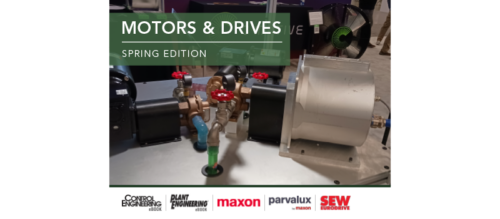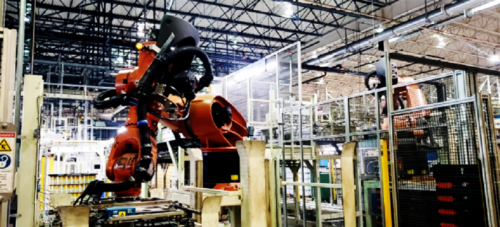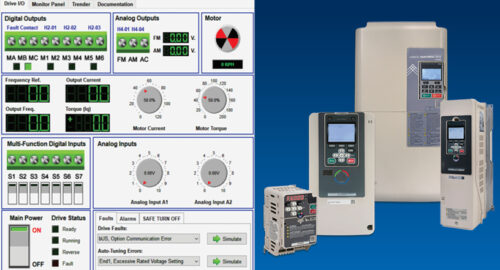Robots on the rise: Showing their metal mettle
Since the first programmable robot design in 1954, much has happened but little has changed. While the first industrial robots were used in 1962 at a General Motors auto plant in New Jersey to spot-weld and extract die castings, nearly a half century later robots are still performing welding and material handling tasks.
Since the first programmable robot design in 1954, much has happened but little has changed. While the first industrial robots were used in 1962 at a General Motors auto plant in New Jersey to spot-weld and extract die castings, nearly a half century later robots are still performing welding and material handling tasks.
When the robotics industry was relatively new, many people thought the intention was to replace workers with robots. To today’s world-class manufacturers, automation is more about efficiency and flexibility than it is replacing workers. With manufacturers struggling to find skilled workers, robots are filling that void, as well as taking on tasks that can be performed safer or with less strain on the humans.
Robotic market trends
Robots continue to be used in traditional applications, which include welding; assembly; machine loading, unloading and other material handling tasks; grinding, polishing and other material removal tasks; and palletizing. According to Jeff Burnstein, executive vice president of the Robotic Industries Association , the fundamental factors driving the use of robotics include:
-
Lower costs for robot technology
-
Improved reliability of robots and sensor technologies
-
Faster, more flexible robots
-
General industry needs for improved quality and productivity
-
Industry specific needs for higher throughput, process validation and traceability.
-
Burnstein said as prices fall, new applications emerge in sectors such as drug discovery, food and beverage, consumer goods, plastics and rubber, furniture and fuel cells. For example, in the consumer goods industry, a major personal hygiene products manufacturer reported that robotic palletizing led to a 50% to 60% reduction in labor costs. In the furniture industry, a robotic packaging system increased production by 45% for a Swedish furniture producer. And in the food and beverage industries a major muffin maker uses robots to decrease damage to muffins resulting from mishandling after baking, according to Burnstein.
RIA estimates that some 178,000 robots are now at work in U.S. factories, placing the United States second only to Japan in overall robot use. More than 1 million robots are installed worldwide.
Ergonomics, material handling
In addition to welding, material handling has been one of the main reasons to invest in robotic automation. “There has been a steady increase in material handling applications, partially because of personnel injuries, health and medical claims,” said Jay Sachania, director of marketing at Adept Technology Inc. “Plus, it’s getting harder to find people to stand there working continuously doing the same thing over and over again.”
The Chrysler plant in Belvidere, IL (a 2005 Top Plant winner) was retooled in late 2005 to accommodate the assembly of up to four different vehicles on one line. The body shop team took this opportunity to address an ergonomic issue.
Loading the front floor pan to an upright turntable was very difficult. The floor pans came from stamping stacked on top of each other in a horizontal rack. The operator had to bend over while reaching across the top of the pan, grab the other side of the pan and lift it, swing the front of the pan to a vertical position, carry the pan a short distance and place it in the turntable tooling. The team tried numerous assist devices with little success.
Using robotics, the team, automated this task and resolved the serious ergonomic issue. The robot moves over the rack, lowers the tooling, senses the floor pan and uses suction-cup tooling to pick up one pan at a time out of the rack. It moves the pan to the conveyor and sets it in the conveyor tooling. The seat reinforcement is lifted into position under the pan. The robot picks up both parts and loads them onto the turntable, which indexes so another robot can weld the reinforcement to the pan.
Ergonomics also motivated SEW Eurodrive in Lyman, SC (a 2007 Top Plant winner) to automate its production. “One of the things that got us into automation was ergonomics — to avoid repetitive motion injuries,” said plant manager Carl Hinze. “We took the burden off the employee.”
At SEW, robots unload raw housings and move them to automatic milling stations where they are milled, bored, drilled and tapped. A typical workstation uses a main gantry arm and several stand-alone robots that load parts into and unload parts from the machines.
Vision
Using vision to guide industrial robots has increased robot-based assembly accuracy. Vision guided robots are now capable of simultaneous assembly and inspection. Locating — or even preventing — defects early in the assembly process greatly improves productivity by eliminating costly rework that could occur if defects are located later downstream.
“In high-speed packaging applications, vision is a vital component of the robot system as the location of objects coming down a conveyor line in a constant stream must be determined and tracked,” said Ed Roney, manager of vision product development, FANUC Robotics . “These objects (often consumer products) flow to multiple robots, which in turn use the location information to make a successful pick-on-the-fly, and package the object into containers. Without vision, each of the parts would need to be well nested, which would be difficult given the high rate of manufacturing that is occurring.”
Vision allows manufacturers to process various part types without robotic tooling changeovers. “Unlike blind robots, vision-guided robots don’t depend on costly precision fixtures to hold parts, require additional labor to load and orient parts or need upstream actuators, sorters and feeders to separate parts for processing,” said Bryan Boatner, product marketing manager for In-Sight vision sensors at Cognex.
In addition to providing manufacturing flexibility to accommodate product changes, Boatner said today’s vision systems are a lot less expensive, which makes the cost of vision-guided robotic applications easier to justify. “Simplified calibration, easier integration and new connectivity standards make vision-guided robots faster and easier than ever to deploy. Beyond locating parts for pick-and-place or guiding a robot to assemble components, machine vision can also inspect, measure and read linear bar codes and data matrix codes as products are being handled or assembled,” he said.
Most vision-guided robotic implementations use image analysis software to calculate positional information from a 2-D image, and provide it to a robot controller, according to Boatner. He said pick-and-place applications typically use a camera to acquire images of an area on a conveyor carrying objects for packaging, palletizing or assembly. “The vision system finds and computes the location of the objects on the conveyor, then converts the location into X-Y and theta coordinates, which it reports to the robot,” he said.
Vision-guided robotic applications that fall somewhere between 2-D and 3-D typically use apparent changes in perspective or size to calculate 3-D data. “Layered bin picking presents objects in random positions and orientations in a stack of trays,” explained Boatner. “When a camera views a stack of parts, the top object appears smaller as the stack gets shorter and its distance from the camera increases.
“In these types of applications the vision system uses the apparent change in size to calculate the top tray’s height so that the robot can continue to add or remove parts from the stack. In the most complex applications, multiple cameras, or structured light techniques are used to provide 3-D data,” Boatner said.
Part variability can hinder a vision sensor’s ability to provide repeatable part location performance. Manufacturing processes have some inherent variability, which, according to Boatner, usually fall into these categories:
-
Part rotation caused by lack of fixturing, vibration/motion on the line, etc.
-
Changes in the scale of a part due to variations in the vision camera’s optical settings
-
Inconsistent or poor lighting
-
Parts produced in distinctly different colors, textures, shapes and sizes
-
Variations caused by modifications to the production process
-
Substitutions of components or materials
-
Different suppliers for a single part
-
The presence of oil, paint, cleaning solvents and other substances that might obscure a part or change its appearance. These may be accidentally introduced, or may be a known result of the production process.
-
If concerned about part variability, specifying vision software that supports sophisticated geometric pattern matching will ensure accurate and consistent part location, said Boatner.
Roney said the drivers of the robotic vision market include the flexibility to adapt to varying part presentations, lower costs from reduced tooling requirements and include online error-proofing requirements to verify that products are correct before further processing.
Force sensing
Force sensing can help manufacturers eliminate damage from part insertion errors or improper alignment during assembly operations. The force with which a tool or end effector is used can be controlled by knowing the amount of force or pressure applied. There are several ways of accomplishing this, depending on how much manufacturers want to spend.
According to Thomas J. Petronis, vice chairman and CEO of Applied Robotics , many force sensing applications use servo current measurement. Although strain gauge and load cell applications exist, Petronis said servo current sensing is more cost-effective in manufacturing environments. Some medical applications or applications where high accuracy is required can justify the expense of these closed-loop systems. But for most industrial or manufacturing applications, servo current measurement is adequate and much less expensive.
Sachania said some robots use force sensing to test switches on automobile steering columns. Robots continuously actuate these switches during reliability testing. “These applications actually use force feedback to see how much force is being applied,” he said.
However, Sachania suggests that force sensing is not widely used in manufacturing. Many manufacturing operations require speed of operation rather than accuracy of applied pressure. “You’re looking for return on investment,” Sachania said. “If the line is slow, your throughput is less. And if you want to be competitive in the market place, you want to make sure you are producing quality parts at higher speeds.
“For example,” Sachania continued, “consider a packaging line that’s picking and placing parts from one conveyor to the next, or picking up a part and putting it inside a box. If you try to add force sensing to it, you will slow down the line.”
Sachania said that even with muffins, manufacturers are not using force sensing directly. Instead, systems that monitor the negative pressure applied to the vacuum cups or the torque applied to the motor provide feedback that offers force-sensing-type capabilities.
Up-front engineering and planning is critical. End effectors can be selected to apply several ranges of pressure. Based on testing during application design, parts can be picked, held and moved at high speeds without damage — even muffins.
End effectors
The end effector is end-of-arm-tooling, and is essential to the work that robots are required to do. Typical end effectors include spray guns, welding devices, grinders, deburring tools, vacuum cups and many varieties of grippers. Many end effectors are complex, and virtually all are application-specific.
Robotic tool changers greatly increase the versatility and flexibility of industrial robots. For example, at Chrysler’s Belvidere Assembly Plant, robots equipped with special quick-change tooling end effectors position automobile body parts while welding robots join them. Robots can change their own tooling in less than one assembly cycle. Tool changers located adjacent to each robot station can hold several sets of tooling — one for each vehicle model that the Chrysler plant is now capable of running. Each robot is equipped with a standard end effector and tool mating assembly that attaches and releases very much like a socket wrench and ratchet.
The future
Burnstein said the industrial robotics market, though maturing, still has a long way to go. “The nonautomotive markets such as life sciences, drug discovery, biomedical, plastics and rubber, and food and consumer goods hold great promise. Automotive opportunities will continue to grow as more cars are sold around the world. As the price of robots continue to fall, and their capabilities grow, look for new applications, such as robotic machining, to gain traction,” he said.
-
Do you have experience and expertise with the topics mentioned in this content? You should consider contributing to our CFE Media editorial team and getting the recognition you and your company deserve. Click here to start this process.





